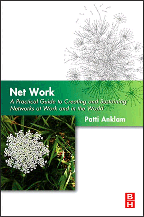The Unconference is Open Space
Thanks to Jenny Ambrozek for pointing me to a great article on the “unconference” just published in Business Week. It seems that the participative nature of Web 2.0 has leaked into the face-to-face realm and met up with the Open Space method developed by Harrison Owen. The article describes a common technique at these unconferences:
“[the organizer] invited anyone present to sign up to speak at the gathering by sticking a Post-it note on one of two big chalkboards he had commandeered. All would-be speakers needed to do was come up with a title and find an open time slot, though Messina noted that ‘most of the grid is already full.’”
First, about unconferences. There was a conversation over on the Value Networks Group last year. I posted the below, but didn’t blog at the time:
I met David Weinberger and Stowe Boyd at KMWorld Dallas in 1999. We subsequently met (with Henry Ogilby, who is now at IDC) to brainstorm aboutbringing some kind of event into Compaq (my employer at the time) around knowledge management but we laid it out specifically as an “Unconference”with the principles below. Obviously similarities to TED, Renaissance Weekends, and the like… of course we were looking for sole sponsorship by Compaq, and the “no sales pitches” part and the need for upfront funding made it a non-starter.
Note that this was written in 1999, before we were wireless, blogging, had pages on LinkedIn, MySpace, etc. At the time, I also was unaware of the Open Space method. The proposed unconference details are below. It’s marvelous to see how close we were to what is now a natural occurrence, enabled, emboldened, and inspired by Web 2.0. It doesn’t hurt that David Weinberger and Stowe Boyd, who generated the ideas below, are two people in the core of many networks swirling around the new age of connectedness.
A Knowledge Management “Unconference”
Theme: “You know something’s happening, but you don’t know what it is.”
Size: 100 people
Audience: People who are literate in the swarm of topics around knowledge
management but have reached a point where they are apprehensive about what
comes next, and what to make sense of the confusion and believe the path
through confusion is dialogue.”
Value Proposition:
- Find out what is emerging, what is “next” after knowledge management.
- Make sense of the confusion, cut through the buzz.
- Reduce the risk of making the paradigm shift (falling off the edge) to whatever “next” is.
Duration: Evening + 2 Days.
Differentiator: No vendors, no exhibits, no sales pitches.
Things to Do (including some Ideas Stolen from Others)
- A few (no more than 5) really good lectures
- Late night TV format: guest/host, moving into the audience for direct questioning by facilitator to audience, specific members of the audience
- Only one track - everyone is in the shared experience
- Field trip to the kitchen - get a perspective on knowledge management in a realworld environment
- Have attendees create Web pages in advance so that people will know who they might want to meet and spend time with
- Make the “unconvention” - how we are turning the traditional conference format upside down - visible and conscious
- Long breaks, structured networking time, assigning groups to brainstorm topics
- Group facilitators
- Enable self-aggregating groups of common interest
- Multidisciplinary
- Provide toys/books/CDs as gifts throughout the conference (donated by companies). No conference bags! (Or conference bags with no bottoms!)
- Provide a “spiritual” break - alternative stress reduction
- Give all attendees a mini Myers-Briggs or similar personality typing exercise and provide a map of how people in different job disciplines /roles fall into the types
Infrastructure
- Access to Web/Web pages/discussion forums
- Mail boxes for attendees to communicate with each other
- Personal Web pages with interests, conversations people want to have
Things to NOT Do
- Standard conference/convention agenda/schedule/breaks
- Talking heads
- Speaker ribbons
- Show bags
- Tracks
- Published proceedings
Input to Conference:
- Assign people to their “learning groups” or subteams prior to the conference, giving each a “thought assignment.” This actually starts the conference before the event itself and provides the infrastructure that will enable the conversation to continue afterwards.
Output of Conference:
- Some container (presentation, wall/time line) of the knowledge created by the conference, distilled into a reusable form.
- Video tape edited from conference activities
- Continuation of conversations on the Web afterward leading toward another event. (Events are needed to trigger participation.)




